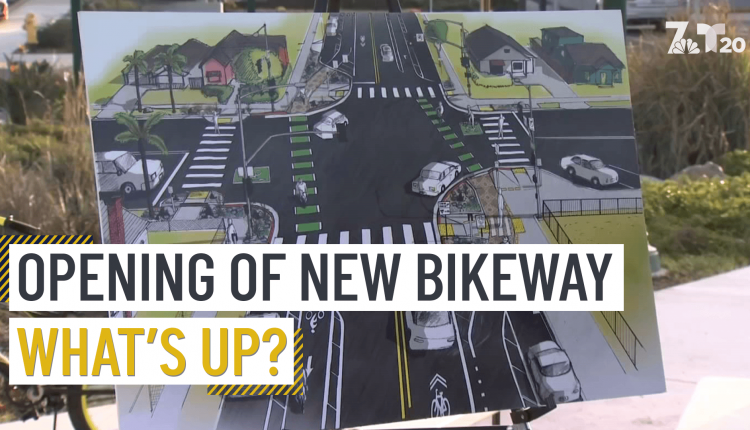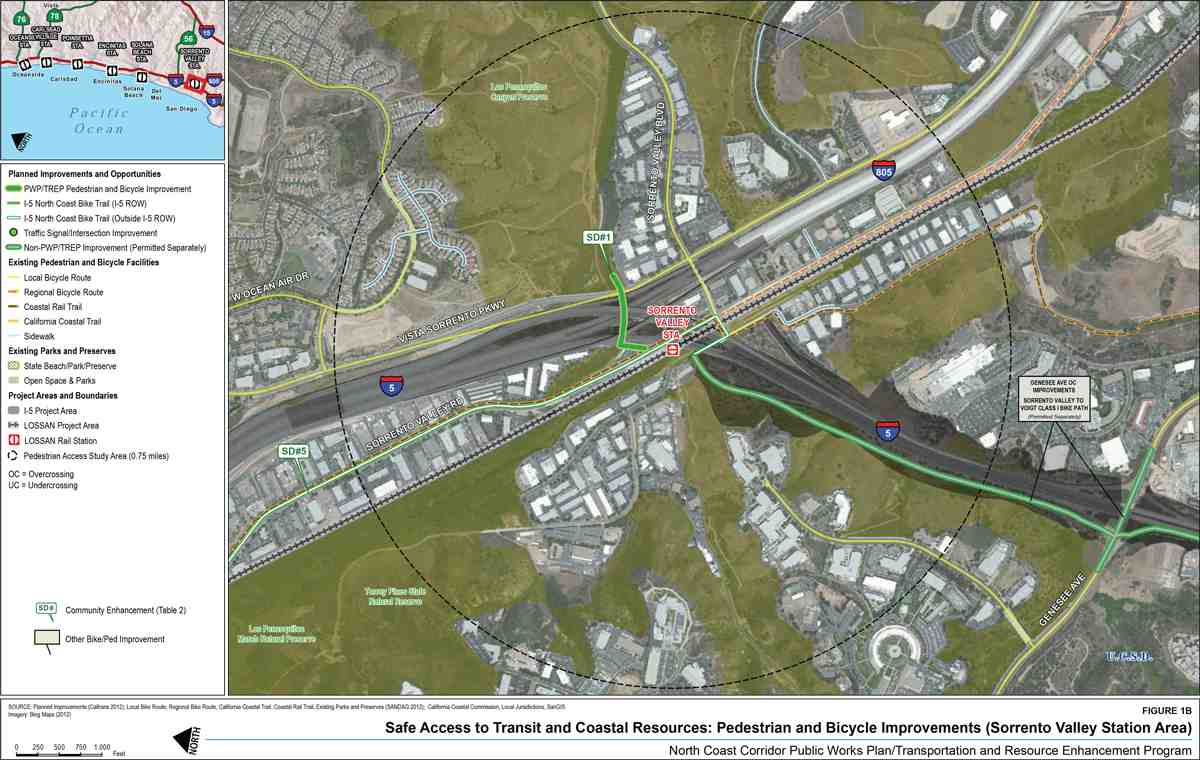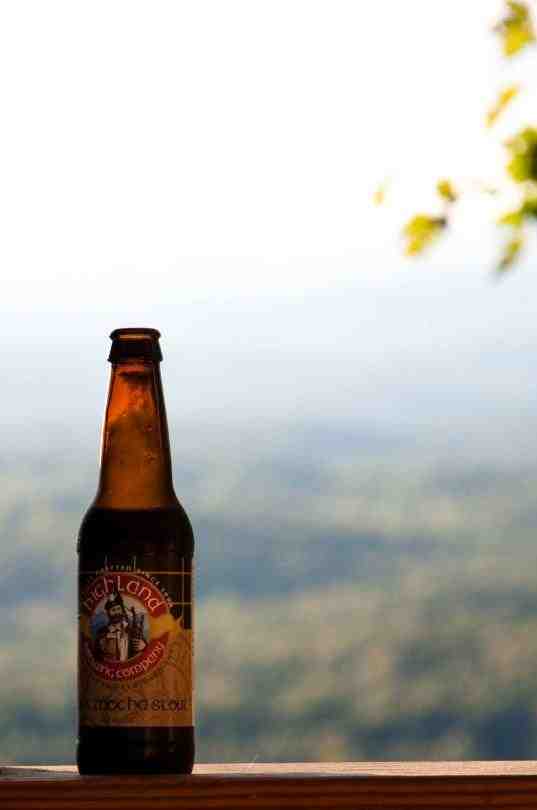Encinitas extends outdoor dining for another 18 months
ENCINITAS – For at least another year and a half, the City of Encinitas will continue to allow outdoor street dining for restaurants, along with other relief provisions enacted for the first time to support local businesses at the height of the coronavirus pandemic.
The Encinitas City Council unanimously approved the extension of the city’s COVID-era relief measures through January 1, 2024, at its Wednesday meeting. Since June 2020, the city has issued temporary trespassing permits, allowing local restaurants to utilize public rights-of-way for outdoor dining purposes.
City leaders cited the need to provide continued relief to businesses still struggling to recoup losses from the pandemic, along with overwhelming feedback from business owners and residents who support the extension of outdoor dining, as the top reasons for the approval of the measure.
The board’s decision came when outdoor dining and alcohol serving measures were due to expire in June. A state executive order protecting those provisions expired in March, leaving it to municipalities to decide whether to continue with these measures on their own.
“I think there’s a huge sense of relief in knowing that these restaurants will now not have to pack their bags in midsummer high street restaurant operations,” said Councilwoman Kellie Hinze.
“During my campaign in 2020, the question was how to keep this as much as possible in the long term, but also in the short term as our business is struggling, and I’m glad the intention is there to keep this going. ” said Hinz. “Our main takeaway from the feedback we received was that restaurants are still suffering from the fallout from the pandemic, including labor shortages and supply chain difficulties and things like that, which is why predictability is so important for restaurants. where they know they won’t have to turn off their capabilities.”
In addition to continuing al fresco dining in right-of-way public parking spaces and on city sidewalks, businesses will still be able to sell and deliver alcohol off-site and serve alcohol in expanded outdoor areas, according to City Councilor Tony Kranz.
The city will also continue to accept new permit applications from companies that want to create their own outdoor dining areas, Kranz said.
Kranz acknowledged that some businesses and residents have openly opposed the continuation of outdoor dining due to concerns about parking encroachment and traffic impacts. However, he expressed that the vast majority of comments on the proposal were favorable.
“The key for me in supporting this was that there was a general lack of citizen objection to this continuation,” Kranz said. “Personally, I like the city center much better with the life it brought to the streets, so I was inclined to keep it.”
Balancing the interests of companies negatively impacted by the proposal versus the benefits for restaurants and residents, Kranz said the board felt the benefits outweighed the costs.
“There are certainly some companies that don’t like break-ins and that’s largely driven by the type of business they have,” Kranz said. “For example, I recently received an email from a businessman about how the loss of parking has affected his business model, as opposed to some of the other adjacent businesses that are geared towards a more nocturnal clientele.
“There are also boutiques that rely on customers to park nearby, but at the same time, there is no doubt that the places are busier because of customers coming to dine downtown and getting this foot traffic. So a lot of that is driven by the type of business that there is and also the fact that you’re doing business in an area where there’s been a loss of parking.”
Scott Smith, owner of The Original 101 Diner, located on the South Coast Highway, has spoken out strongly against continuing outdoor dining.
“There’s no parking downtown anymore, so I can’t believe you’re thinking about extending the street dinner for another year and a half when Covid is over,” Smith said. “Businesses that rely on daytime traffic, as opposed to nighttime pedestrian traffic, are being crushed by the lack of daytime parking.
But a majority of businesspeople and residents at Wednesday’s meeting spoke in favor of the council’s decision.
Whitney Johndro, COO at Culture Brewing, said alfresco dining and other COVID-era pro-business measures remain a vital lifeline for a number of local establishments that are still reeling from massive losses incurred during the pandemic. .
“We have been hit hard by the COVID-19 closures and the continuation of outdoor space will allow us to recoup some of those losses caused by the pandemic,” said Johndro. “We believe that these outdoor spaces have created an extremely positive experience for downtown Encinitas and have been huge in enabling businesses to survive these tough and difficult times.”
Mark Dobbins and Ray Vento, owners of Roxy Encinitas, said their customers prefer to continue eating out.
“People love the outside seating, and with a possible Covid resurgence in the near future, it makes a lot of sense to offer people this outside dining option,” said Dobbins. “These street patios have also been a lifeline for the restaurant community and maintaining them will give us the ability to recoup lost revenue in every Covid outage.”
“People live here (and move here) because of the weather all year round,” said Vento. “People want to sit outside all year round here. It’s brain damage to me that this hasn’t been an option here historically.” The community has proven that parking is not an issue. Clearly, there’s an underlying mindset that it pays to hitchhike, Uber, or walk in exchange for alfresco dining. I hope the city recognizes the demand from residents and visitors for al fresco dining.”
David Peck, president of the Encinitas 101 MainStreet Association, said that, overall, most local businesses have expressed support for extending outdoor dining.
Peck noted that the board appears to have found a compromise in its decision, not permanently extending COVID-era protections to businesses, similar to the city of San Diego, but instead doing so on a temporary basis, allowing leaders to of the city to reevaluate the professionals. and cons of the policy at a future date.
“Clearly, a balance of interests needs to occur in terms of parking and traffic, providing the outdoor dining opportunities that bring so much vitality to downtown after two years of closure,” said Peck. “So I think this 18-month extension really strikes a middle ground between those worried about parking and those who really love outdoor dining. We can see how it goes during this period of postponement and then revisit the issue, but overall the community seems to embrace the opportunity to continue eating al fresco.”
Despite Wednesday’s vote, councilors acknowledged that there is still work to be done to mitigate the impacts of outdoor establishments on parking, traffic and public safety.
Hinze said the city has received considerable feedback from residents and businesses frustrated by the reduced number of parking spaces caused by the expansion of open-air restaurants. In the coming months, Hinze said the city team will conduct a parking study to identify strategies aimed at alleviating the parking problem.
“We will be looking at things like shared parking arrangements between companies, identifying locations for employee parking in the city center, encouraging people to use different forms of transport, and then we will consider public buses as a potential solution,” Hinze said. . “The idea is that you can park once and sponsor multiple deals, so people don’t feel like parking is a constraint and avoid our downtown.”
In terms of traffic, Kranz said he is personally concerned about congestion along Coast Highway 101 due to outdoor dining areas that restrict certain sections of the road.
“We need to work to be creative in addressing the issues related to traffic flows on Highway 101, in particular the lack of left pockets on D and E streets is a disaster, they cause traffic chaos constantly on weekends when it gets busy ” said Kranz. “There is no real solution to this particular problem. The best solution is, ultimately, for people to leave their cars at home and come downtown on foot or by bicycle to reduce traffic.”
The board also remains concerned about the safety of customers dining along the road, as there are no clear standards stipulating how restaurants must protect customers in high-traffic areas, Kranz said. The city currently sets up orange barricades along the 101 that restaurants can use to protect their dining areas, but the councilor acknowledged that this alone may not be enough to ensure diners’ safety.
“Yes, there is a safety issue for restaurant customers who dine in what used to be a parking lot, with decks or tables set, so the issue of whether the orange barricades will suffice is something our public safety and risk management department has to deal with. people have determined that it is acceptable, but there is no doubt that the risk of accidents is higher on a street like this,” Kranz said. “There’s no question it’s a bigger risk, I think the solution is to keep reminding people to slow down, not drive and drive and make sure our law enforcement is there during peak times.”
Related Posts:
Contents
- 1 Related Posts:
- 2 Is it safe to shop for food during the COVID-19 pandemic?
- 3 Is outdoor dining allowed in Chula Vista?
- 4 Is outdoor dining allowed in California?
- 5 Is outdoor dining allowed in LA County?
Is it safe to shop for food during the COVID-19 pandemic?
As grocery shopping remains a necessity during this pandemic, many people have questions about how to shop safely. To see also : Ehlers: Is Encinitas lost?. We want to reassure consumers that there is currently no evidence that food or human or animal food packaging is associated with transmission of the coronavirus that causes COVID-19.
How can I stay safe while grocery shopping? Stay at least five feet away from other shoppers. Do not shake hands, hug or have any physical contact. Clean grocery carts or basket handles with disinfectant wipes, if you have them. Do not touch the face. Use a cloth face mask. While waiting and after leaving the store, use hand sanitizer if you have it.
Can COVID-19 be transmitted through food?
There is currently no evidence that food or food packaging is associated with the transmission of the coronavirus. It is important to recognize that unlike foodborne gastrointestinal (GI or stomach-related) viruses that often make people sick through contaminated food, coronavirus is a virus that causes respiratory (breath-related) illness. To see also : 9 people hospitalized in Encinitas after high-speed chase ends in car crash. The virus is believed to mainly spread from person to person.
Am I at risk for COVID-19 from touching food or packaging?
Again, there is no evidence that food packaging is associated with the transmission of COVID-19. However, if you wish, you can clean the product packaging and let it air dry as an extra precaution.
• Do not share plates, glasses, cups, silverware, towels or bedding with others in your home. • Wash these items well after use with soap and water or place them in the dishwasher.
There is currently no evidence that people can catch COVID-19 from food. The virus that causes COVID-19 can be killed at temperatures similar to other known viruses and bacteria found in food.
What can I do to prevent COVID-19 during grocery shopping?
• Clean your hands with disinfectant before entering the store. • Cover your cough or sneeze with your bent elbow or tissue. This may interest you : In the face of fierce opposition, the Encinitas legislature fired the chief planning officer. • Keep at least 1 meter away from other people and if you cannot keep that distance, wear a mask (many stores now require a mask).• When you get home, wash your hands well and also after handling and storing the purchased products.
Before eating, wash fresh fruits and vegetables under running water, including those with skins and rinds that are not ingested. Scrub firm products with a clean product brush. For canned goods, remember to clean the lids before opening. When unpacking groceries, refrigerate or freeze meat, poultry, eggs, seafood and other perishables – such as berries, lettuce, herbs and mushrooms – within 2 hours of purchase. Regularly clean and sanitize kitchen counters using a commercially available disinfectant product.
Can COVID-19 be transmitted through food or food packaging?
Given that the number of viral particles that could theoretically be picked up by touching a surface would be very small and the amount required for infection by oral inhalation would be very high, the chances of infection by touching the surface of food packaging or eating food are considered extremely high. short. USDA and FDA are sharing this update based on the best available information from scientific bodies around the world, including an ongoing international consensus that the risk is extremely low for transmission of SARS-CoV-2 to humans via food and packaging. of food.
Can I catch COVID-19 by eating food handled or prepared by others?
According to the CDC, the risk of contracting COVID-19 from handling or consuming food from a restaurant, takeout, or car is very low.
Can COVID-19 transmit through food?
While there is currently no evidence to suggest that COVID-19 is transmitted through food, the pandemic has impacted the supply chain and consumers’ access to the food they seek, making supply chain continuity and food availability top priorities. FDA.
Can I get COVID-19 from food, food packaging, or food containers and preparation area?
There is currently no evidence that food, food containers or food packaging is associated with the transmission of COVID-19. Like other viruses, it is possible for the virus that causes COVID-19 to survive on surfaces or objects. If you are concerned about contamination of food or food packaging, wash your hands after handling food packaging, after unpacking food, before you prepare food for eating, and before eating.
• Do not share plates, glasses, cups, silverware, towels or bedding with others in your home. • Wash these items well after use with soap and water or place them in the dishwasher.
Is outdoor dining allowed in Chula Vista?
The City of Chula Vista allows al fresco dining along Third Avenue and adjacent streets in the Vila area through an administrative permit process, including the issuance of a trespass permit if within the public right of way.
Does San Diego County allow outdoor dining? San Diego City Council on Tuesday provisionally approved the “Spaces as Places” program, which will permanently allow outdoor dining and other amenities in spaces previously envisioned as temporary during the COVID-19 pandemic.
Why is outdoor dining closed in California?
L.A. County Public Health Director Barbara Ferrer said it was necessary because dining outdoors required diners to remove their masks, increasing the risk of transmission. Ghaly, the state official, said the ban had a broader purpose.
Does the COVID-19 Omicron variant cause less damage to the lungs?
The Omicron variant appears to cause less damage to the lungs compared to previous coronavirus variants, which may be why it causes less serious illness.
We are not aware of any reports at this time of human illness that suggest that COVID-19 could be transmitted through food or food packaging. However, it is always important to follow good hygiene practices (i.e. wash hands and surfaces frequently, separate raw meat from other foods, cook at the right temperature and refrigerate foods immediately) when handling or preparing food.
What is the safest way to go out to eat during the COVID-19 pandemic?
Picking up food while wearing a mask or having it delivered to your door is still the safest way to enjoy a meal that wasn’t prepared at home. The CDC describes drive-through, delivery, pickup, and curbside pickup options as the lowest-risk way to dine out.
How long do the symptoms of the Omicron last?
The shorter duration of Omicron symptoms was more prominent among people with three doses of the vaccine. Symptoms lasted about 7.7 days during Delta dominant months and 4.4 days during Omicron dominant months, meaning a difference of 3.3 days.
Is Patio dining allowed in California?
Today, we’re announcing that CA will allow outdoor dining and cocktail takeout expansions after we fully reopen on June 15th! “It’s going to attract a lot of people because, I mean, 90% of our customers don’t want to have dinner inside anymore.
Is outdoor dining allowed in LA County?
The Los Angeles County Department of Public Health encourages restaurants to continue to prioritize outdoor dining, pick-up and delivery services for the safety of workers and customers as they pose lower risks of COVID-19 transmission when compared to indoor dining. .
Can you dine in in California?
California today eliminated a frequent point of contention between restaurants and guests by eliminating the requirement that dinner diners wear a face mask or show proof of being vaccinated against COVID-19.
Is outdoor dining allowed in California?
Today, we’re announcing that CA will allow outdoor dining and cocktail takeout expansions after we fully reopen on June 15th! “It’s going to attract a lot of people because, I mean, 90% of our customers don’t want to have dinner inside anymore.
What’s the safest way to go out to eat during the COVID-19 pandemic? Picking up food while wearing a mask or having it delivered to your door is still the safest way to enjoy a meal that wasn’t prepared at home. The CDC describes drive-through, delivery, pickup, and curbside pickup options as the lowest-risk way to dine out.
We are not aware of any reports at this time of human illness that suggest that COVID-19 could be transmitted through food or food packaging. However, it is always important to follow good hygiene practices (i.e. wash hands and surfaces frequently, separate raw meat from other foods, cook at the right temperature and refrigerate foods immediately) when handling or preparing food.
Can I get COVID-19 through food?
Unlike foodborne gastrointestinal (GI) viruses such as norovirus and hepatitis A, which often make people sick through contaminated food, SARS-CoV-2, which causes COVID-19, is a virus that causes respiratory diseases. Food exposure to this virus is not known to be a route of transmission.
The USDA and FDA are sharing this update based on the best available information from scientific bodies around the world, including an ongoing international consensus that the risk is extremely low of transmission of SARS-CoV-2 to humans through food and food packaging.
Can I catch COVID-19 by eating food handled or prepared by others?
According to the CDC, the risk of contracting COVID-19 from handling or consuming food from a restaurant, takeout, or car is very low.
Does the COVID-19 Omicron variant cause less damage to the lungs?
The Omicron variant appears to cause less damage to the lungs compared to previous coronavirus variants, which may be why it causes less serious illness.
Is there a difference in spread between the Omicron and Delta COVID-19 variant?
The Omicron variant spreads more easily than previous variants of the virus that cause COVID-19, including the Delta variant. The CDC hopes that anyone with an Omicron infection, regardless of vaccination status or whether or not they have symptoms, can spread the virus to others.
What is the COVID-19 Omicron XE variant?
What is omicron XE? XE is what is known as “recombinant”, a type of variant that can occur when an individual is infected with two or more variants at the same time, resulting in a mixture of their genetic material in a patient’s body.
Is the Delta COVID-19 variant more severe than the Omicron?
Health experts say Omicron often causes milder symptoms than earlier variants. But the death count is high because Omicron spreads quickly and is infecting large numbers of people.
Should I be worried about getting the COVID-19 Omicron variant?
While some have suggested that most people will eventually contract the coronavirus, you should do your best to avoid becoming infected with Omicron – there is no justification for deliberately infecting yourself, so you have what you think will be a mild illness that will provide more immunity going forward, doctors say.
How long do the symptoms of the Omicron last?
The shorter duration of Omicron symptoms was more prominent among people with three doses of the vaccine. Symptoms lasted about 7.7 days during Delta dominant months and 4.4 days during Omicron dominant months, meaning a difference of 3.3 days.
Signs and symptoms include respiratory symptoms and include fever, cough, and shortness of breath. In more severe cases, the infection can cause pneumonia, severe acute respiratory syndrome, and sometimes death. Standard recommendations to prevent the spread of COVID-19 include frequent hand cleaning with alcohol-based hand rub or soap and water; cover nose and mouth with a flexed elbow or disposable tissue when coughing and sneezing; and avoiding close contact with anyone who has a fever and cough.
What are the organs most affected by COVID‐19?
The lungs are the organs most affected by COVID€ 19
In what conditions does COVID-19 survive the longest?
Coronaviruses die very quickly when exposed to UV light from sunlight. Like other enveloped viruses, SARS-CoV-2 survives longer when the temperature is at room temperature or lower and when the relative humidity is low (
Can people with mild COVID-19 symptoms recover at home?
People with mild symptoms who are healthy should manage their symptoms at home. On average, it takes 5-6 days from the time someone is infected with the virus for symptoms to appear, but it can take up to 14 days.
Is outdoor dining allowed in LA County?
in Spanish. The County has developed the COVID-19 Temporary Outdoor Dining Program for restaurants in unincorporated Los Angeles County that are interested in expanding dining seating in private driveways and parking lots and in the county roadway pass.
Is Outdoor Dining Allowed in Los Angeles County Now? The Los Angeles County Department of Public Health encourages restaurants to continue to prioritize outdoor dining, pick-up and delivery services for the safety of workers and customers as they pose lower risks of COVID-19 transmission when compared to indoor dining. .





